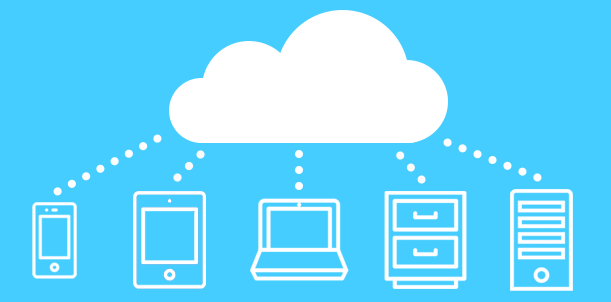
How to Move to a Cloud Document Management System
How often have you had trouble locating a document? Paper documents get lost in transit from job site to office. If (or when) the documents make it into the office, they can get misfiled into an abyss of paperwork. So then, we make the transition to electronic documents. Hooray! But then we run into new problems. The electronic documents now sit in someone’s inbox and that someone happens to be on vacation. Or even worse, they are stored on the company’s servers which are inaccessible from the job site. We took one step forward with eliminating paper, but also took one step back in not creating an accessible cloud document management system.
Table of Contents
What is a cloud document management system?
First of all, a document management system serves as a virtual filing cabinet. It stores, tracks, and manages digital documents. Some document management systems also create a log of access and edits made by a user. Another benefit of document management systems is also the search feature. Some systems allow searching by file names or even full document search.
Cloud document management systems allow accessibility of the system through the internet. Before cloud-based document management systems, many companies hosted their document management system on in-house servers. It provided the great benefits of serving as a central repository of documents with easy searching capabilities, but the access was limited to only those users in the office.
A cloud-based document management system opens up access to any user regardless of location. The only thing a user needs is an internet connection. This allows excellent flexibility to access relevant documentation to workers who may be working remotely – from either home, client site, or construction site.
In addition to accessibility, cloud document management systems are more superior than traditional document management systems in terms of storage, maintenance, and cost. Traditional document management systems require substantial financial investment in the purchasing of servers and licenses. As space needed increases, then the IT department must purchase additional servers as well as conduct ongoing maintenance for data backup and disaster recovery. Cloud document management systems manage the storage, upgrades, and backup seamlessly – with low initial financial investment.
Top 5 features to look for in a cloud document management system

Unlimited storage – File storage can quickly add up. So, when looking for a cloud document management system, you want to ensure that you there is no limit to the number of files that you can store.
Mobile app – While a cloud document management system delivers access wherever you have an internet connection, a mobile app will make access even easier. You can access and view any content from iOS and Android smartphone or tablet device. As a bonus, once a document has been downloaded to the device, a user can access and view the document without an internet connection.
Security – Depending on a user’s role and responsibilities, they may not need (nor will you want) them to have access to certain documents. A cloud-document management system should have appropriate security to specific folders and files based on a person’s role.
Version control – The great thing about a document management system is the collaboration features. Users can go in and make edits as needed and upload new versions. Sometimes this causes too much confusion on what the correct version is. Document management systems should allow users to view prior versions and the changes made.
Integration – Similar to the phrase “no man is an island,” the same should stands for systems. Document management systems should integrate with other systems you already use.
Implementing a cloud document management system
Once you’ve decided to move forward with a cloud document management system, the fun can begin. This is an excellent opportunity to clean house, purge unnecessary documents, and establish best practices. Below are a few other helpful tips for implementation:
Scanning – Transferring a large number of paper documents into an electronic form can take hours, days or weeks, depending on the number of documents. Determine if there is any value in investing time and resources in scanning old documents for the new document storage system or move forward in using the system for current and new projects and documents.
Structure – A new system is the best time to re-evaluate your current processes and where you would like to make improvements. Establish a standard folder structure and file naming convention to make storing and finding documents as easy as possible.
Training – While it may seem like a document management system is very easy to use, training is essential. This is important to ensure that users follow your new best practices accordingly and utilize the system as intended.
Updates – Just like most software, cloud document management systems will receive regular updates. Users should be aware of the latest updates to take full advantage of the software. For example, if there is a new update such as “tagging” of documents. This would be an excellent opportunity to implement a new best practice for your organization and train the team accordingly.
Cloud document management systems are relatively easy to implement and easy to use solution, while delivering exceptional value to organizations. Take advantage of a cloud document management system to improve access and control of your important documents.